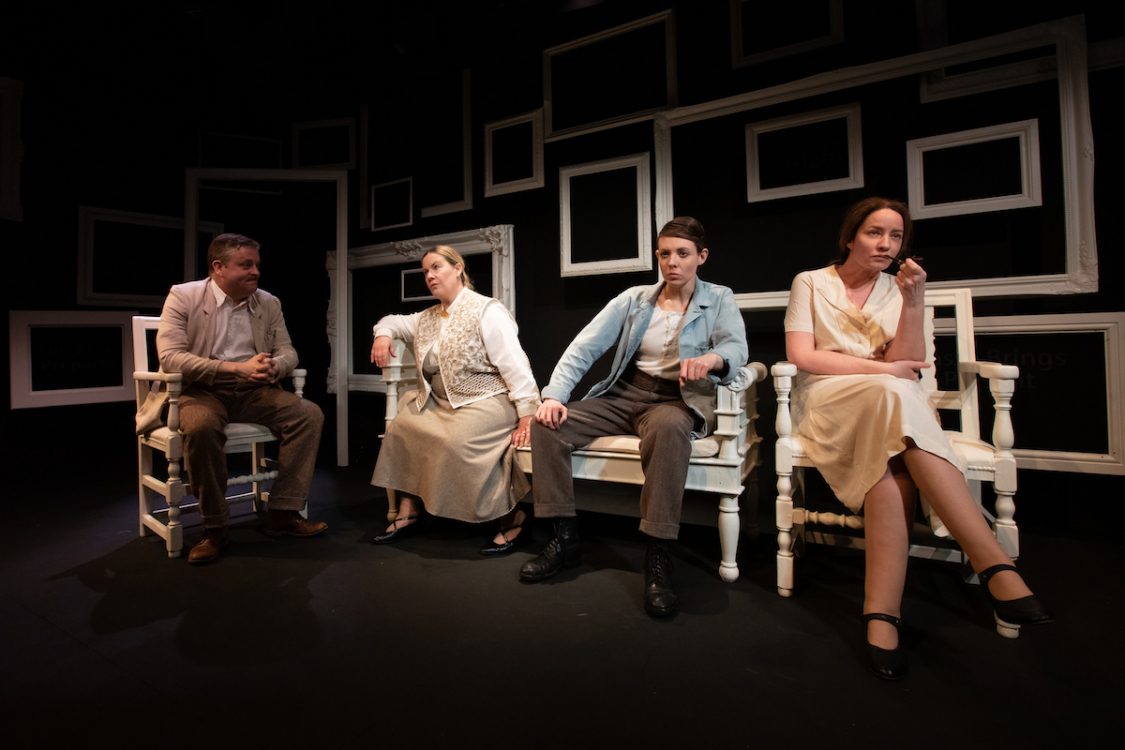In a modernist romp of a play, actors are pretending to be Gertrude Stein and Alice B. Toklas where Stein and Toklas often pretend to be each other. The meaning of artifice is to the fore in Edward Einhorn’s neatly modelled homage to the salon of Gertrude Stein in Paris between the wars.
The four performers fill the stage with characters they are ‘pretending’ to be including T.S.Eliot, Ezra Pound and Picasso. The artist is played by the versatile Kelly Burke who also plays his wife and two of his mistresses, all of whom simultaneously attend the marriage of the title.
One of the preoccupations of the salon is who is a genius? Toklas insists that she knows three geniuses: Stein, Picasso and the mathematician and philosopher Alfred North Whitehead. So where does that leave Hemingway? The big man played by Mark Huckett is forever attempting to wheedle his way into the ranks of the geniuses in an atmosphere enlivened by wit, laughter and Alice B. Toklas’ celebrated cannabis brownies. The play asserts that Picasso and Hemingway moulded their self image and then began to inhabit the character they had created – they pretended to be themselves until they were what they wanted to be.
The four give a pacey, energetic performance which neatly counterpoints the seriousness of the concepts of art and reality with which this piece juggles. The repetition and insistence of Stein’s conversational style about art and life are bounced around in a series of farcical romps including one in which they all pretend to be bulls charging Hemingway’s matador. The set is a simple but effective design by Machiko Weston, with white picture frames against black walls representing Stein’s salon.
The stand-out performance is by Alyssa Simon, as an Alice B.Toklas who always seems to know more than she says, looking forward to her Jewish wedding but dreaming of conversations with Christian characters.
A marriage is a marriage, as Stein might have said, and as an audience we accept the marriage of these two women, as do the famous friends who attend the event. But a marriage of two women was not, according to the law a real thing, it was a pretend. Such was certainly the view of Stein’s relatives who after her death stripped the marital apartment of precious paintings and left Stein’s wife in poverty. Yet our view of the relationship is that it was real, even as acted out by players, and the objections to lesbian marriage were a greedy pretence to allow the theft of marital property. What, a modernist might ask, is real in this, what is telling the truth the art or the law?
Einhorn deftly explores important issues about gay marriage and Jewishness. He says, ‘I wanted to give them a joyful Jewish wedding that would have been inconceivable in their time’, while recognising the fragility of the situation of Stein and Toklas. This is absurd theatre at its best with comedy in the midst of tragedy.
Natasha Byrne was struck down with Covid and so not able to perform on the night I attended, the part was gamely taken by Augustina Seymour.

